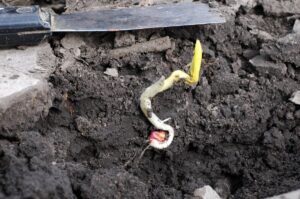In mid-April when our thoughts turned to planting corn hoping for an early planting season, Mother Nature had other plans in mind. Many regions in the east experienced cool, wet conditions which raised concerns about planting early. Let’s review some talking points surrounding what we need to consider before we pull out the planter.
Checking the weather forecast and soil temperatures for your area is a good place to start. Generally, fields with crop residue will be slower to warm compared to fields with drier soil and less residue. Checking the soil early in the morning before planting is a good practice. Also know that hybrids can respond differently to cold stress. Planting hybrids with higher cold stress tolerance first is recommended.
Corn seed germination occurs around 50°F, with most rapid germination occurring in the 80s. Even if a hybrid has been proven cold tolerant, there is a physical phenomenon called imbibitional chilling that can override the genetics. This usually happens 24-36 hours after planting when the seed imbibes or absorbs water. During this window if the soil temperature drops much below 50°F, chilling injury can affect seed germination and seedling growth (Figure 1). These symptoms include leafing out below ground and twisted leaves. The exact temperature of damage is debatable but the lower the temperature during the first 48 hours after planting the higher the risk of damage.

Figure 1. Distorted seedling growth due to cold soil temperatures (Courtesy of University of Nebraska).
This brings us back to the question of whether planting early is always better. What has been proposed is to not focus on a specific calendar date but on a window of time that will produce optimized yields. This time frame varies with geographic region. For example, PennState Extension suggests under ideal conditions the optimized yield window for the southeastern corner of the state is April 15th to May 1st, whereas in the northern tier and Laurel Highlands the planting dates range from May 15th to 25th. However, these ranges can vary depending on the year. In summary, knowing your field conditions and the weather forecast within 48 hours of planned planting will help you determine whether to exercise patience and wait a couple more days or start up the planter.